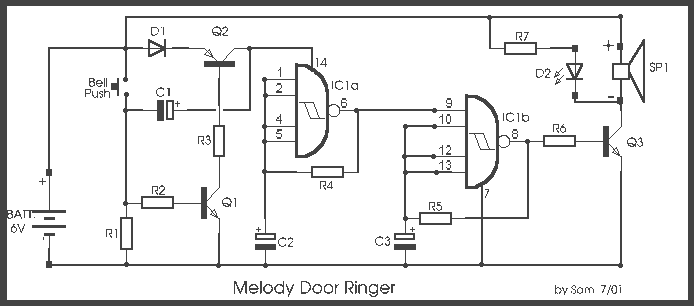
Hardware circuit C51 microcontroller serial communication

The 51 microcontroller features a full-duplex serial communication port, enabling straightforward serial communication between the microcontroller and a computer. However, certain conditions must be met for effective communication, such as the computer's serial port operating at RS232 levels while the microcontroller operates at TTL levels. Therefore, a level conversion circuit is necessary to bridge the two. The MAX232 chip is typically used for this conversion, although it is possible to simulate the conversion using transistors; however, using a dedicated chip is generally easier and more reliable. A three-wire serial connection is employed, which consists of three lines from the computer's 9-pin serial connector: pin 5 for GND, pin 2 for RXD, and pin 3 for TXD. This configuration represents the simplest connection method, adequately serving the circuit's requirements. The circuit is designed using the 11-pin connector for the MAX232, connecting to pin 10 of the microcontroller, with pin 9 of the microcontroller linked to the 10-pin connector and pin 15 connected to the MCU's 20-pin connector.
The schematic for the serial communication circuit incorporates the MAX232 level shifter, which facilitates the conversion of TTL signals from the microcontroller to RS232 levels, making it compatible with standard serial communication interfaces found on computers. The MAX232 typically has a set of capacitors connected to its pins that are crucial for its operation, providing the necessary charge pumps for the level shifting process.
In this configuration, the RXD line from the computer connects to the TXD line of the microcontroller, allowing data to be received by the microcontroller. Conversely, the TXD line from the microcontroller is connected to the RXD line of the computer, enabling data transmission from the microcontroller to the computer. The ground (GND) connection is essential to maintain a common reference point for both devices, ensuring stable communication.
The use of a three-wire connection simplifies the design, reducing the number of connections required while maintaining the functionality needed for effective serial communication. The circuit's robustness can be enhanced by including bypass capacitors close to the power pins of the MAX232 to filter out noise, which could potentially disrupt the communication process.
Overall, this setup provides a reliable means of establishing serial communication between a 51 microcontroller and a computer, leveraging the capabilities of the MAX232 for level shifting and ensuring compatibility between different voltage levels used by the devices.51 microcontroller has a full-duplex serial communication port, so you can easily serial communication between the microcontroller and the computer. When the serial communicati on to meet certain conditions, such as PCs serial port is RS232 level, while the microcontroller is TTL level serial port, there must be a level conversion circuit between the two, we were using a dedicated chip MAX232 conversion, although you can also simulate the conversion with a few transistors, but still with a special chip easier and more reliable. We use a three-wire serial connection, which means that the computer and the 9-pin serial connector which is only three lines: 5 feet GND, RXD 2 feet, 3 feet of TXD.
This is the easiest connection method, but enough for us to use the circuit as shown below, 11-pin connector MAX232 pin 10 and the microcontroller, 9 feet and the microcontroller 10-pin connector, and the first 15 feet MCU 20-pin connector. Serial communication hardware circuit as shown below.
The schematic for the serial communication circuit incorporates the MAX232 level shifter, which facilitates the conversion of TTL signals from the microcontroller to RS232 levels, making it compatible with standard serial communication interfaces found on computers. The MAX232 typically has a set of capacitors connected to its pins that are crucial for its operation, providing the necessary charge pumps for the level shifting process.
In this configuration, the RXD line from the computer connects to the TXD line of the microcontroller, allowing data to be received by the microcontroller. Conversely, the TXD line from the microcontroller is connected to the RXD line of the computer, enabling data transmission from the microcontroller to the computer. The ground (GND) connection is essential to maintain a common reference point for both devices, ensuring stable communication.
The use of a three-wire connection simplifies the design, reducing the number of connections required while maintaining the functionality needed for effective serial communication. The circuit's robustness can be enhanced by including bypass capacitors close to the power pins of the MAX232 to filter out noise, which could potentially disrupt the communication process.
Overall, this setup provides a reliable means of establishing serial communication between a 51 microcontroller and a computer, leveraging the capabilities of the MAX232 for level shifting and ensuring compatibility between different voltage levels used by the devices.51 microcontroller has a full-duplex serial communication port, so you can easily serial communication between the microcontroller and the computer. When the serial communicati on to meet certain conditions, such as PCs serial port is RS232 level, while the microcontroller is TTL level serial port, there must be a level conversion circuit between the two, we were using a dedicated chip MAX232 conversion, although you can also simulate the conversion with a few transistors, but still with a special chip easier and more reliable. We use a three-wire serial connection, which means that the computer and the 9-pin serial connector which is only three lines: 5 feet GND, RXD 2 feet, 3 feet of TXD.
This is the easiest connection method, but enough for us to use the circuit as shown below, 11-pin connector MAX232 pin 10 and the microcontroller, 9 feet and the microcontroller 10-pin connector, and the first 15 feet MCU 20-pin connector. Serial communication hardware circuit as shown below.





